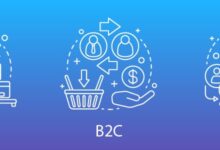B2B Meaning: 7 Powerful Insights You Must Know
Ever wondered what ‘b2b meaning’ really stands for? It’s more than just business jargon—it’s the backbone of global commerce. Let’s break it down in simple, powerful terms.
B2B Meaning: The Core Definition

At its heart, the b2b meaning refers to ‘business-to-business’—a model where one company sells products or services to another. Unlike B2C (business-to-consumer), B2B transactions happen behind the scenes, powering industries from manufacturing to tech.
What Does B2B Stand For?
The acronym B2B stands for ‘Business-to-Business.’ This model involves commercial transactions between two businesses, such as a wholesaler and a retailer, or a software provider and a corporation. These interactions are typically based on long-term contracts, bulk orders, and relationship-driven sales.
- B2B is not about individual consumers but organizational buyers.
- Transactions are often high-volume and high-value.
- Decision-making involves multiple stakeholders.
“B2B is where the real economic engine runs—behind every product you buy, there’s a chain of B2B relationships.” — Forbes
How B2B Differs from B2C
Understanding the b2b meaning requires contrasting it with B2C. While B2C focuses on emotional appeal and quick sales, B2B emphasizes logic, ROI, and long-term value. For example, a consumer might buy a laptop for personal use after seeing an ad, but a company will evaluate specs, support, bulk pricing, and integration capabilities before purchasing 100 units.
- B2B sales cycles are longer and more complex.
- B2C marketing uses mass media; B2B relies on targeted outreach like LinkedIn or trade shows.
- B2B customers expect detailed proposals and service agreements.
Key Characteristics of B2B Transactions
The b2b meaning becomes clearer when we examine the defining traits of B2B commerce. These characteristics shape how companies interact, negotiate, and build partnerships in the professional world.
Longer Sales Cycles
In B2B, decisions are rarely made overnight. A single purchase can involve months of evaluation, demos, negotiations, and approvals. For instance, a hospital looking to adopt a new electronic health record system might spend 6–12 months assessing vendors, conducting pilot tests, and securing board approval.
- Multiple departments (IT, finance, operations) may be involved.
- Requests for Proposals (RFPs) are common.
- Vendors must provide detailed documentation and case studies.
Higher Order Values
Because B2B purchases are made for operational needs, the order values are significantly higher than in B2C. A company might spend $50,000 on enterprise software or $2 million on industrial machinery. These high stakes demand rigorous due diligence and strong vendor credibility.
- Pricing is often customized based on volume and service level.
- Contracts include SLAs (Service Level Agreements).
- Payment terms may include net-30 or net-60 days.
“In B2B, trust is the currency. You’re not just selling a product—you’re selling reliability.” — HubSpot
Types of B2B Business Models
The b2b meaning extends across various models, each serving different market needs. Understanding these helps businesses choose the right strategy and partners.
Manufacturer to Wholesaler
This is one of the oldest B2B models. A manufacturer produces goods and sells them in bulk to wholesalers, who then distribute them to retailers. For example, a textile mill supplies fabric to a clothing wholesaler, which sells to retail chains.
- Focuses on large-scale production and logistics.
- Requires strong supply chain management.
- Profit margins are thinner but volume compensates.
Wholesaler to Retailer
In this model, wholesalers act as intermediaries, buying from manufacturers and reselling to retailers. They often provide warehousing, regional distribution, and credit terms to smaller retailers.
- Reduces the burden on manufacturers to manage retail logistics.
- Enables retailers to access diverse products without direct factory ties.
- Common in FMCG (Fast-Moving Consumer Goods) sectors.
Service-Based B2B
This growing segment includes companies that offer services like IT support, consulting, digital marketing, or HR outsourcing. For example, Deloitte provides audit services to other corporations, and AWS offers cloud infrastructure to tech firms.
- Value is based on expertise and outcomes, not physical goods.
- Contracts are often subscription-based or project-based.
- Success depends on client retention and performance metrics.
B2B Meaning in the Digital Age
The b2b meaning has evolved dramatically with technology. Today’s B2B landscape is digital-first, data-driven, and increasingly automated. Companies no longer rely solely on sales reps and trade shows—they use e-commerce platforms, CRM systems, and AI-powered analytics to engage clients.
Rise of B2B E-Commerce
B2B e-commerce is booming. According to Statista, global B2B e-commerce sales are projected to reach $20.9 trillion by 2027, far surpassing B2C. Platforms like Alibaba, Amazon Business, and ThomasNet allow businesses to source products online with ease.
- Buyers expect Amazon-like experiences: fast search, reviews, and one-click reordering.
- Vendors must optimize for mobile and integrate with procurement systems.
- AI chatbots handle initial inquiries and support.
“Digital transformation isn’t optional in B2B—it’s survival.” — McKinsey & Company
Role of CRM and Automation
Customer Relationship Management (CRM) tools like Salesforce and HubSpot are essential in modern B2B. They track leads, manage pipelines, and personalize communication at scale. Automation tools further streamline tasks like email follow-ups, quote generation, and contract management.
- CRM increases sales efficiency and customer retention.
- Marketing automation nurtures leads with targeted content.
- Data analytics help predict customer needs and churn risks.
Marketing Strategies in B2B
The b2b meaning also shapes how companies market their offerings. Unlike flashy B2C ads, B2B marketing is about building trust, demonstrating expertise, and delivering measurable value.
Content Marketing and Thought Leadership
B2B buyers are researchers. They read whitepapers, case studies, and industry reports before making decisions. Companies that publish high-quality content position themselves as experts. For example, IBM shares in-depth research on AI and quantum computing to attract enterprise clients.
- Webinars, eBooks, and blogs educate potential buyers.
- SEO is critical for visibility in niche search terms.
- Content must address pain points and offer solutions.
Account-Based Marketing (ABM)
ABM is a strategic approach where marketing and sales teams collaborate to target high-value accounts with personalized campaigns. Instead of casting a wide net, ABM focuses on a few key prospects with tailored messaging.
- Uses data to identify decision-makers and their challenges.
- Combines direct mail, LinkedIn outreach, and custom demos.
- Proven to increase conversion rates and deal size.
“ABM turns marketing from a spray-and-pray model to a sniper approach.” — Demandbase
Challenges in B2B Commerce
Despite its scale and importance, the b2b meaning comes with unique challenges. Companies must navigate complex sales processes, intense competition, and rapidly changing buyer expectations.
Long Decision-Making Processes
With multiple stakeholders involved—procurement, finance, legal, and end-users—getting approval can be slow. A single delay in one department can stall the entire deal.
- Sales teams must map out all influencers and decision-makers.
- Providing clear ROI calculations speeds up approvals.
- Regular follow-ups and status updates keep momentum.
Need for Customization
B2B clients often demand tailored solutions. A software company might need to modify its platform to integrate with a client’s legacy systems. This requires flexibility and technical resources.
- Customization increases development costs and time.
- Clear scope definition prevents ‘scope creep.’
- Modular product designs allow easier adaptation.
Customer Retention and Churn
Acquiring a B2B customer is expensive—up to 5–7x more than retaining one. Yet, many companies focus too much on acquisition and neglect retention.
- Onboarding, training, and support are critical for satisfaction.
- Regular check-ins and success reviews build loyalty.
- Competitors are always one email away from poaching your client.
Future Trends Shaping B2B Meaning
The b2b meaning is not static. As technology and markets evolve, so do the rules of B2B engagement. Staying ahead requires foresight and adaptability.
AI and Predictive Analytics
Artificial Intelligence is transforming B2B sales and marketing. AI tools can predict which leads are most likely to convert, recommend next-best actions, and even draft personalized emails.
- Chatbots handle 24/7 customer inquiries.
- Predictive analytics forecast demand and inventory needs.
- AI-driven insights improve pricing and negotiation strategies.
Sustainability and Ethical Sourcing
More B2B buyers are prioritizing sustainability. Companies want suppliers with low carbon footprints, ethical labor practices, and transparent supply chains. This trend is driven by both regulation and brand reputation.
- Green certifications (e.g., ISO 14001) add competitive advantage.
- Carbon reporting is becoming a standard requirement.
- Sustainable practices reduce long-term operational risks.
“Sustainability isn’t just good ethics—it’s good business in B2B.” — Harvard Business Review
Real-World Examples of B2B Success
To truly grasp the b2b meaning, let’s look at companies that have mastered the model.
Salesforce: Leading the SaaS B2B Revolution
Salesforce is a prime example of B2B success in the software space. As a SaaS (Software-as-a-Service) provider, it offers CRM solutions to businesses of all sizes. Its platform integrates sales, marketing, and customer service tools.
- Uses a freemium model to attract small teams.
- Offers enterprise-grade security and customization.
- Hosts annual Dreamforce conference to engage clients.
Intel: Powering Global Tech Supply Chains
Intel sells microprocessors to computer manufacturers like Dell, HP, and Lenovo. It doesn’t market directly to consumers but is essential to the devices they use.
- Invests heavily in R&D to stay ahead of competitors.
- Builds long-term partnerships with OEMs.
- Uses B2B marketing to highlight performance and reliability.
Siemens: Industrial B2B Innovation
Siemens provides automation, energy, and healthcare solutions to industries worldwide. Its B2B model spans engineering, digitalization, and services.
- Offers end-to-end solutions, not just products.
- Leverages IoT and AI in its industrial systems.
- Focuses on co-innovation with clients.
What is the basic b2b meaning?
The basic b2b meaning is ‘business-to-business,’ referring to transactions between two companies, such as a supplier selling to a manufacturer or a software firm licensing to a corporation. It contrasts with B2C, where businesses sell directly to consumers.
How does b2b meaning apply to e-commerce?
In e-commerce, b2b meaning refers to online platforms where businesses buy and sell goods or services to each other. Examples include Alibaba, Amazon Business, and industry-specific marketplaces that streamline procurement and supply chain operations.
Why is understanding b2b meaning important for entrepreneurs?
Understanding b2b meaning helps entrepreneurs identify market opportunities, design effective sales strategies, and build scalable business models. It’s essential for anyone looking to sell products or services to other businesses rather than individual consumers.
What are common industries that operate on b2b meaning principles?
Common B2B industries include manufacturing, IT services, wholesale distribution, logistics, SaaS, industrial equipment, and professional consulting. These sectors rely on business partnerships to deliver value across supply chains.
How has technology changed the b2b meaning over time?
Technology has transformed b2b meaning by enabling digital marketplaces, automation, data analytics, and remote collaboration. Cloud computing, AI, and CRM systems have made B2B interactions faster, more efficient, and more personalized than ever before.
Understanding the b2b meaning is crucial for anyone involved in modern commerce. From its core definition to evolving digital trends, B2B is the engine that drives global business. Whether you’re a startup founder, a sales professional, or a marketer, mastering B2B principles can unlock growth, build lasting partnerships, and create sustainable success. As technology and customer expectations continue to evolve, the future of B2B will be shaped by innovation, personalization, and value-driven relationships.
Further Reading:







